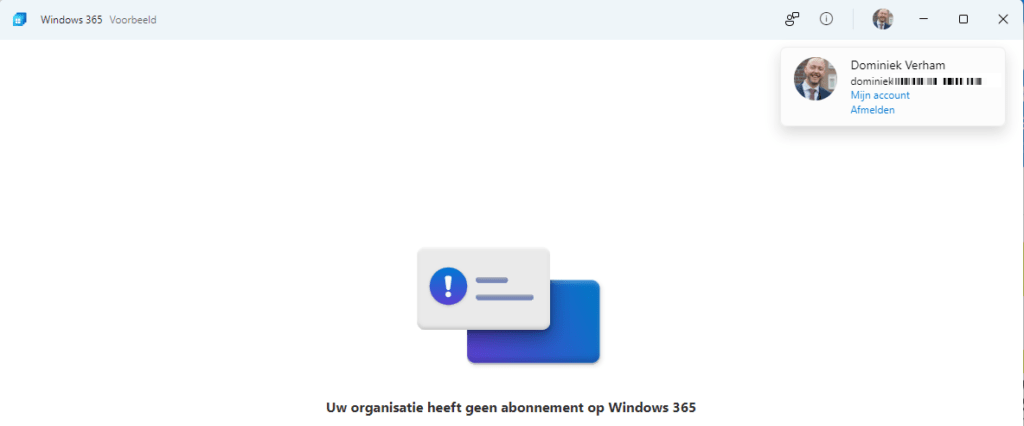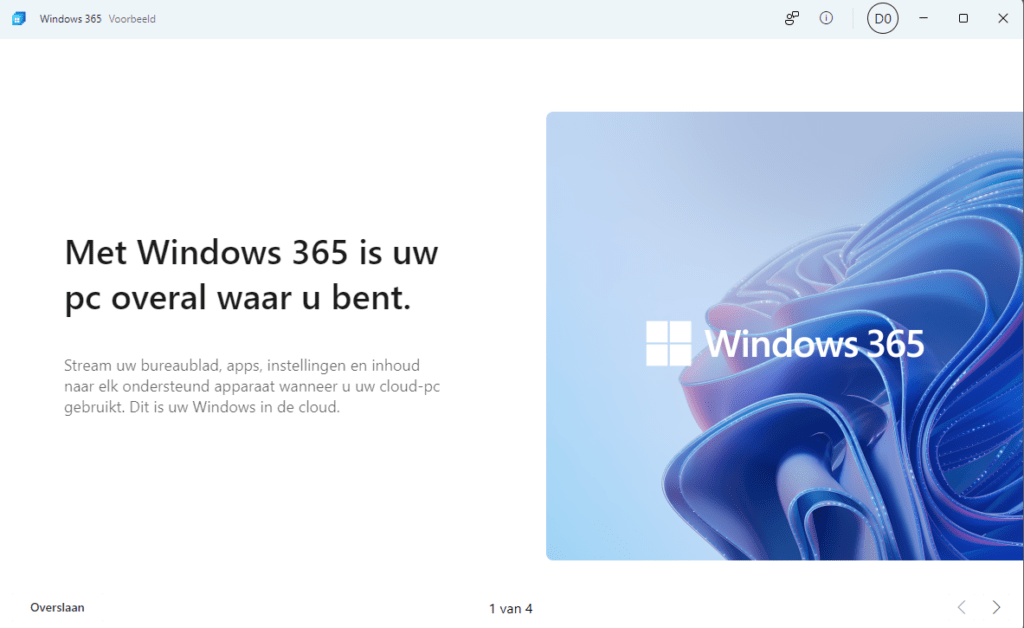
What’s up, everyone!
Yesterday was a big day for Windows 365 as Microsoft announced a lot of cool new features! And there are some big things on the list, like;
- The Windows 365 App just went into Public Preview.
- Citrix HDX Plus for Windows 365 went into Public Preview.
Microsoft also announced some enhancements to EA via new alerting capabilities, such as;
- Connectivity Health Checks and Connectivity History Report blog.
- System Alerts blog.
In this post I’ll take a look at the Windows 365 App and I’ll try to answer a couple of questions like, what is it and what does it do? Why should we use it? Does it have any limitations and what are the requirements? I hope you’re as excited about this as I am, so let’s take a look!
Requirements
The Windows 365 App requires Windows 11. It will not work on Windows 10. Also make sure to check the Cloud PC requirements. See this Microsoft doc if you want to know more.
I removed the Remote Desktop application in my demo. If you haven’t you might have a conflict between boths apps.
Did you know that the Windows 365 App also supports the Microsoft Dev Box solution?

You can get the Windows 365 App in a number of ways;
- The Microsoft Store for Windows app.
- Microsoft download.
- It will be shipped with Windows 11 in the future.
Open the Microsoft Store for Windows app. Search for ‘Windows 365’ and click on the Get button to install the Windows 365 app.

Or you can download the app from Microsoft on https://windows365.microsoft.com. Click the down arrow on the top left side of your screen and click the Go to Microsoft Store button.


I opened the app and I noticed it signed in immediately! That’s SSO right out-of-the-box, awesome! But… my account isn’t the account I use in my demo and I do not have a Cloud PC license assigned. So I immediately got hit with the ‘You don’t have a Cloud PC license assigned’ message. Let’s fix that.

Just click the sign out option. The app will close automatically. Just open it again and this will trigger a familiar login:

You’ll see the introduction experience after successful login.

When the introduction finishes, you’ll see the Cloud PC’s that are assigned to your account. If you want to run the introduction again, just click on the top button.

If you used the Windows 365 Cloud PC before or if you’ve been following along with the series about the Cloud PC, then you should see that this experience already feels familiar.
You can see which type of Cloud PC is assigned to your account and you can connect to it. The three dots are present as well and if you click on them, you get the self-servicing options (if you’ve allowed them, in my environment I disabled some of them).

Multiple screens work out-of-the-box.

You can switch to windowed mode by clicking on the middle button (two mini screens) on the connection bar. You can change the size of the Window as you please while the app will dynamically resize the screen of your Cloud PC.


Let’s take a look at the different options we have to login to our Cloud PC. We can use the:
Information Worker Portal
Connect with any HTML5 capable browser to https://windows365.microsoft.com or https://cloudpc.microsoft.com. You’ll get access to the Cloud PC but you are limited to a single monitor. It does not support multiple monitors.
Remote Desktop application
You can download it from Microsoft and install it on your Windows computer. You can also deploy this application using Microsoft Intune. This application has more capabilities, for instance multiple monitors. A drawback is that you have to manage the application for each update.
Windows 365 App (Public Preview)
This app can be installed via the Microsoft Store for Windows or pushed from Intune. It enhances the user experience on several instances;
- Multiple monitors is enabled by default.
- It seamlessly logins the user so you only have to authenticate agaist the Cloud PC itself.
- Windowed mode supports dynamic resizing of your screen.
- It supports the self-servicing capabilities of your Cloud PC.
The Wrapup
The app is currently in public preview. I think it will become the primary method for endusers on Windows 11 to connect to their cloud PC’s once it hits GA. Simply because it supports the most important features, it’s really easy and intuitive to use, it enhances the user experience by only having the login to the Cloud PC and it will be included in future Windows 11 builds.
Resources
I used the following resources for this blogpost:
Experience the Windows 365 app: public preview available now
Share this:
- Click to share on LinkedIn (Opens in new window) LinkedIn
- Click to share on X (Opens in new window) X
- Click to share on Facebook (Opens in new window) Facebook
- Click to share on WhatsApp (Opens in new window) WhatsApp
- Click to share on Telegram (Opens in new window) Telegram
- Click to print (Opens in new window) Print











One Comment
Comments are closed.